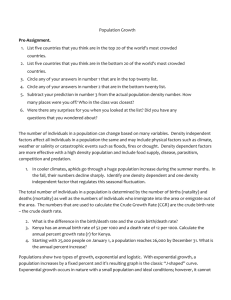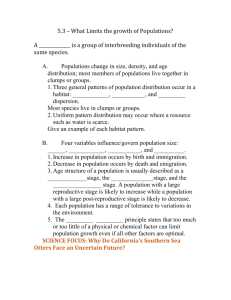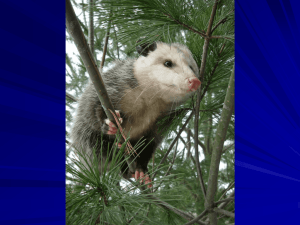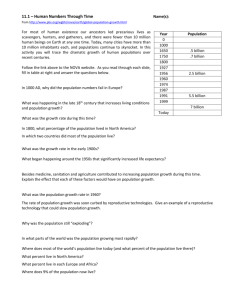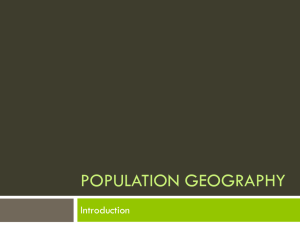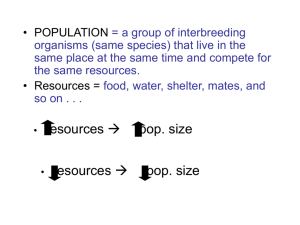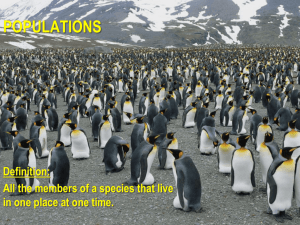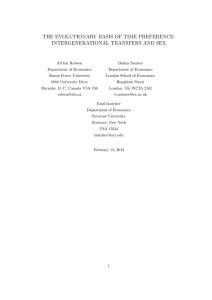Ch. 53 on population Ecology
advertisement
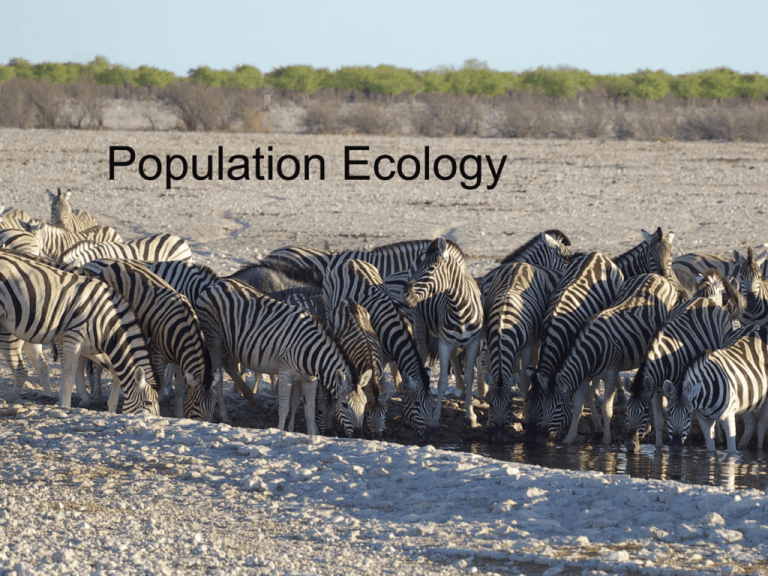
Population Ecology Population single Def. a group of individuals of a __________ species living in the same area Characteristics of a popl’n 1) Size 2) Density 3) Dispersion 4) Age Structure Dynamic Population Pyramid US vs. Swaziland Measuring Density Mark and Recapture Method 4 1 = 3 x 4x = 3 5 4 x = 4/3 x 3 How would you find the value of x? 1 Set up a proportion Apply same strategy of proportion for mark and recapture method Mark and Recapture 40 fish are marked, captured and released. In 2nd capture, 45 fish are caught, 9 of which were marked (recaptured) What is the estimated number of individuals in the population? # of recaptures in 2nd catch # of captures = Total Popl’n (N) Total in 2nd catch 9 40 = 45 N 9N = 1800 N = 200 Demography Def. The study of factors that affect the growth and decline of populations. Factors that affect growth: Birth and Immigration Factors that affect decline: Death and Emmigration Survivorship Curves Describe how mortality of individuals in a species vary over time; gives survival pattern of popl’ns Type I: most survive to middle Type III: most Type II: constant age before individuals die death rate; mortality rates while still young; likelihood of death increase; few few survive toages is equal at all offspring (high care reproductive age of young) Life Histories Characteristics that describe an organism’s survival and reproductive schedule 1. Big Bang Reproduction / Semelparity Ex. Salmon Spawning • Lower rate of offspring survival • Unpredictable env’ts 2. Repeated Reproduction / Interoparity Ex. Lizards, humans • Higher rate of offspring survival • More dependable env’ts w/ limited resources Population Growth Models 2 Models 1) Exponential Growth Model 2) Logistical Growth Models What population do you think this is? Exponential Growth Model 1) Also called geometric growth or Jshaped growth. 2) 1st growth phase is slow (lag phase) 3) 2nd growth phase is rapid (the exponential phase) So, what do you think is going to happen to the human population? • We will probably reach our carrying capacity. • Our growth rate will start to look like most organisms, which is the Logistic Growth Model Carrying Capacity (k) What letter does this curve kind of look like? Logistical Growth Model 1) Often called the S-shaped growth curve 2) Growth slows or stops following exponential growth at the population’s carrying capacity 3) Populations stop increasing when: • • Birth rate < Death rate Emigration > Immigration 4) Carrying capacity can be raised or lowered. How? • • Ex. 1: Artificial fertilizers have raised k Ex. 2: Decreased habitat can lower k Deriving Equations to Growth Models We will now derive the mathematical equations for both models First let’s define some variables: N = Population size K = Carrying capacity T = time r = reproductive rate B = # of births D = # of deaths


